Advanced injection molding technologies have a significant role to play in the rapidly changing manufacturing landscape because they enhance production efficiency, product quality and design flexibility. This comprehensive guide provides an in-depth overview of the latest innovations and techniques in injection molding. From automating processes and incorporating smart technology to developing new materials and methodologies, we will examine how the industry has been influenced by these advances as well as where it is heading. Experienced or not, this guide has valuable information on the principles, applications, and advantages of modern injection molding technologies. This article will take a look at how these technologies are revolutionizing contemporary manufacturing practices.
What Is Injection Molding?
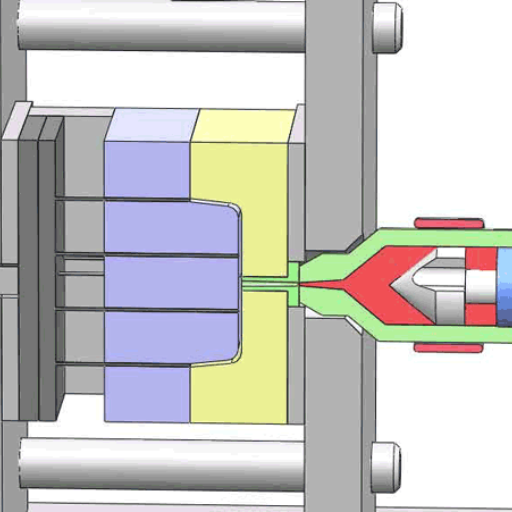
Image source: https://boyanmfg.com/
Injection moulding is a process used for manufacturing parts by injecting molten material into a mould. Normally employed in making plastic components, this method includes feeding raw materials into a heated barrel; mixing them up before ejecting them into a mould cavity for cooling and hardening so that they acquire their desired shape. The technique is preferred due to its ability to make complex parts with high repeatability and low levels of wastage through cost-effectiveness.
Understanding the Injection Molding Process
Procedure starts with raw material preparation. Usually it is thermoplastic or thermosetting polymers put into a heated barrel. In the barrel, the mixture of the material takes place and helps to direct it towards the mold using reciprocating screw. As soon as enough heat is generated, liquid substance is forced into sealed cavity of pressurized mold. The other parts are cold so that solidification can take place rapidly in the quickly cooled die made from steel or aluminum materials. When this occurs, after molding happens and all ejector pins are used to push out finished product, molded part will be opened via unlock of the die’s sections which encloses it inside while holding before ejection by pins.Upon completion of manufacturing cycle this method may be employed to generate high volume intricate and uniform assemblies very efficiently.
Different Types of Injection Molding
Injection molding involves a range of types that suit different applications and material aspects. Primary types are as follows:
- Thermoplastic Injection Molding: The most common type uses thermoplastic polymers which melt when heated and solidify upon cooling. This method is very useful for making high detailed, reusable parts; thus, it is highly popular in industries like automobiles, consumer products, and medical devices.
- Thermoset Injection Molding: On the other hand, thermoset polymers cure permanently on heating so they cannot be melted again. This process is good for components that need to resist heat and have electrical insulation; hence it is usually applied in electronic gadgets and appliances.
- Overmolding: It refers to a specific approach whereby one material is molded over another with the aim of improving product performance or aesthetics. For instance, an elastic rubber-like material can be molded around a rigid plastic base so as to make the handle of a tool more ergonomic.
Each type has its own advantages that enable manufacturers to choose how best to go about them depending on the kind of materials they want their final products made from.
How Injection Molding Machines Work
Series of mechanical and hydraulic processes are what drive injection molding machines. The procedure begins with plastic pellets being fed into a heated barrel from a hopper. Within the same barrel, there is a screw that makes reciprocating movements enabling friction to make the screw generation heat while melting the pellets. Then molten material is delivered into the mold cavity at high pressure by use of either the plunger or screw, which pushes it. During cooling process, typically through water or any other coolant, the material solidifies in this shape as determined by the mold. After cooling, the mold opens and thus ejecting out a finished part ends this cycle hence ready for another one. This method ensures that there are precise details and uniformity in every part made.
What Materials Are Used in Injection Molding?
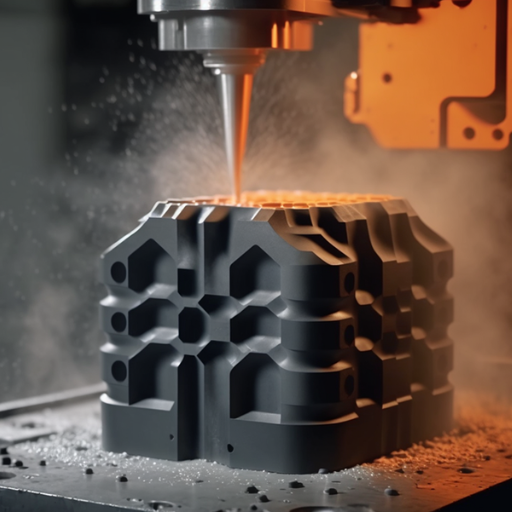
Utilization of a wide variety of raw materials in injection molding is largely due to the demands for different attributes needed in specific applications. Materials commonly used include:
- Thermoplastics: These are materials that can be melted and remelted without significant degradation, such as polyethylene, polypropylene, polystyrene and polycarbonate making them suitable for a great number of uses.
- Thermosetting Plastics: Contrary to thermoplastics, these are materials like epoxy, phenolic and melamine which harden permanently after treatment with heat. They are applied in components requiring high thermal stability and resistance to hostile environments.
- Elastomers: These have flexibility and durability like silicone or rubber which makes them very common in products needing stretchability or impact resistance.
- Metals: Some specialized injection moulding processes use metals like aluminium and magnesium etc to produce lightweight, high strength components for automotive and aerospace industries.
These materials are selected according to specific requirements dictated by the final product hence ensuring performance, durability and function.
Common Plastic Materials for Injection Molding
Various plastic materials are employed in injection molding, each of which is suitable for different applications on the basis of its distinctive properties. The most commonly used plastics are:
- Polypropylene (PP): This plastic is quite versatile and can resist chemicals well, besides being tough and elastic enough. Packaging, automobile parts as well as consumer goods usually have it.
- Acrylonitrile Butadiene Styrene (ABS): ABS has high impact strength, good mechanical properties and is easy to process. It is often used in automotive parts, electronics housings and consumer goods.
- Polyethylene (PE): It is the leading type of plastic with high ductility and chemical resistance as well as low cost. Examples are plastic bags, bottles and toys.
These plastics are preferred for use in injection molding because they offer reliability, effectiveness and adaptability to various applications hence ensuring that final products are of high quality and long-lasting.
Thermoset vs. Thermoplastic: What’s the Difference?
Thermosets and thermoplastics differ in their behavior when heated. When thermosets are heated, they go through a chemical change resulting into formation of an irreversible covalent bond. They are suitable for applications requiring permanent strength because once cured, they cannot be remelted or reshaped. A few examples of the afore-stated materials include epoxy resins, phenol resins and silicone elastomers. On the other hand, thermoplastics can be melted and reformed over again without significant changes in properties. This is why most of them have high flexibility that make them recyclable. That is to say that when the temperature increases these plastics become soft enough to take up new shapes; some common examples are polypropylene, polyethylene and polycarbonate. The choice between a composite or a laminate depends on specific performance requirements such as temperature stability as well as flexibility and durability.
The Role of Polymer in Injection Molding
Polymers are essential materials for injection molding since they provide the matrix in which the final product is cast. Polymers used depend upon specific factors like tensile strength, flexibility etc., as needed by particular applications for which they have been chosen. In this process, polymers are heated to molten state before being injected into a mould where cooling solidifies them into desired shape. It is thus possible to produce complex parts with consistent quality using this method on large scale at low costs per unit volume. Various types of polymers namely thermoplastics/thermosets bring out different benefits thereby making it easier for manufacturers to choose right materials for making high-performance products that can serve long at lower cost than any alternative ones available at that time.
How Does Injection Molding Technology Work?
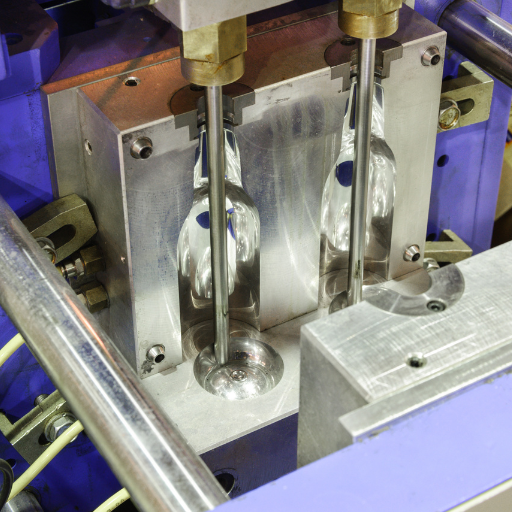
The process of injection molding begins with polymer granules being heated until they melt. This melted plastic is then injected into a mold cavity at high pressure. The mold is made to the exact specifications of the intended final product. When the molten plastic fills up the mold, it cools and hardens into the shape of the cavity. The newly formed part is then ejected when the mold opens again. By repeating this cycle, an identical part can be manufactured rapidly and efficiently. Key elements of an injection molding machine include hopper, barrel, reciprocating screw and mould itself that play crucial role in its success.
The Importance of Mold Design
Mold design is vital to any injection molding process because it determines production quality, efficiency and cost-effectiveness directly. A well-designed mould ensures homogeneity and accuracy in end products by manipulating factors such as flow rate, cooling time and pressure distribution. Critical aspects of mould design include choosing materials that can withstand high pressures and temperatures during production; developing efficient cooling channels to minimize cycle time; and providing sufficient vents for appropriate venting to prevent defects. Furthermore, a strong mould design reduces maintenance costs, increases the lifespan of a mould hence ensures overall reliability and productivity related to manufacturing needs. An investment in meticulous mold design results in higher-end products as well as considerable savings over time due to low costs involved during manufacture.
The Role of Cycle Time in the Injection Molding Process
Cycle time is very important in the injection molding process as it determines both production efficiency and cost. Actually, cycle time is defined as the duration of one full cycle which encompasses the steps of injection, cooling, and ejection. The need to optimize cycle time involves several issues like injection speed, cooling rate and mould design. A shorter cycle time will greatly increase productivity enabling manufacturers to produce many more parts within a given period. However, reducing cycle time should never compromise final product quality. Properly maintained machine tools, accurate temperature controls and efficient cooling channels are crucial for cutting down on overall manufacturing times without sacrificing quality requirements of the end products.
Innovations in Injection Molding Technologies
Innovation in recent times has brought with it a change to the manufacturing sector through injection molding, which is aimed at improving efficiency, accuracy and environmental sustainability. One of such innovations includes the development of multi-material and multi-color injection molding capable of producing complex parts within a single operation; this brings down assembly time as well as costs while increasing design flexibility.
Another revolutionary milestone is the application of new materials like biodegradable polymers and high-temperature thermoplastics that have widened the scope of injection molding into many industries. These materials have better mechanical properties as well as offering environmentally friendly alternatives in line with increasing emphasis on sustainable practices in manufacturing.
Moreover, smart manufacturing technologies and Industry 4.0 have also entered the field of injection molding. By incorporating IoT (Internet of Things) and AI (Artificial Intelligence), real-time monitoring and predictive maintenance are possible reducing downtime while improving overall productivity. Smart sensors and automation systems ensure higher precision and repeatability for consistent product quality.
These technological advances altogether drive forward the shift toward more adaptable, efficient, and eco-friendly injection molding technology.
What Are the Different Types of Injection Molding?
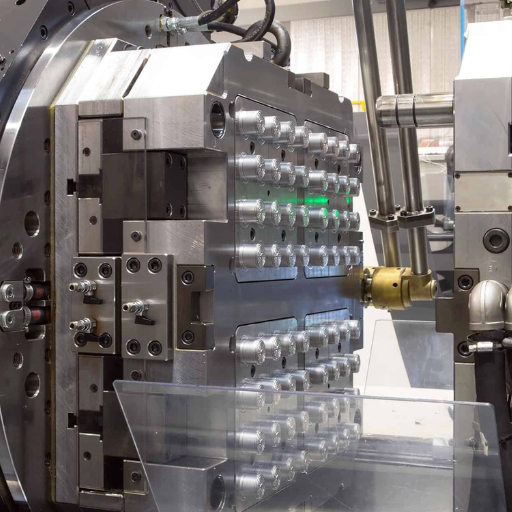
Some of the varieties of injection molding include:
- Thermoplastic Injection Molding: This type uses thermoplastic polymers that are capable of being melted and hardened repeatedly.
- Thermoset Injection Molding: It involves using thermosetting polymers, which after being heated and shaped become solidified.
- Overmolding: Involves one material being molded over another, typically creating soft-touch grips or components made from multiple materials.
- Insert Molding: It entails combining metal or other inserts into a mold to create complex parts with integrated components.
- Gas-Assisted Injection Molding: Thicker sections have air let out by this process thereby reducing the weight as well as conserving raw materials without compromising strength.
- Liquid Silicone Rubber (LSR) Injection Molding: This method is used in making flexible and durable rubber parts perfect for medical devices and automotive components.
These are different types that can cover a wide range of uses in terms of everyday consumer products, industrial applications.
Exploring Gas-Assisted Injection Molding
Gas-assisted injection molding is a technique that improves the development of complicated and thick-walled pieces by shooting gas, typically nitrogen, through liquid plastic inside the cavity. Some of its benefits include:
- Material Savings: The making of hollow parts in the object uses less plastics which translates into substantial cost savings.
- Weight Reduction: The resultant empty structures are lighter hence this method is ideal for automotive as well as aerospace industries where weight is critical.
- Reduced Warpage and Sink Marks: Plastic is evenly distributed around minimizing such common defects that result from internal pressure applied by gas.
- Enhanced Design Flexibility: Such an innovation allows for simpler manufacturing possibilities than can be achieved with conventional injection molding especially when it involves intricate geometries.
- Improved Cycle Times: It takes less time to cool because of those hollow sections thus faster cycle times and higher production speeds are realized.
Gas-assisted injection moulding helps manufacturers produce high quality lightweight complex parts meeting tight performance targets while at the same time optimising material and production costs.
The Benefits of Structural Foam Molding
Structural foam molding has a wide range of uses that are particularly useful in industries where high strength, light weight and complex parts are demanded. The following are some of the main advantages.
- Weight Reduction: It is much lighter than others because it can use a gas-assisted injection process that makes cellular cores so that the final products have less mass without any reduction in strength and rigidity.
- Enhanced Strength and Durability: A combination of dense outer skin and core foam gives improved mechanical properties making the parts resistant to impact, wear and tear.
- Lower Material Costs: With less material being used for foam core, raw material consumption is reduced, thus lowering production costs while still producing durable and strong components.
- Design Flexibility: This method facilitates complicated configurations for engineering parts like ribbing or bosses which would be hard to get with conventional injection molding methods.
- Dimensional Stability: Structural foams have better dimensional stability which results into reduced chances for warpage or shrinkage over time or when under different environmental circumstances.
- Reduced Tooling Costs: Because structural foam operates at lower pressures throughout the process it therefore reduces mold wear hence extending life span of molds as well as minimizing production setups’ tooling expenses.
By adopting structural foam molding manufacturers achieve industry-specific quality standards by delivering lightweight materials that meet durability requirements across sectors such as automotive and consumer goods.
Introduction to Micro Injection Molding Techniques
The process of micro injection molding is one of the advanced manufacturing techniques that have been developed for making very small and accurate components using plastics. Especially in the fields of medical devices, electronics and micro mechanics, this method is important since it requires miniaturization and precision.
Key Aspects:
- High Precision and Accuracy: Being able to produce miniature parts to very tight tolerances, often in micrometers, is often critical for ensuring that they meet exacting performance and reliability criteria.
- Material Selection: The technique can be used to process various thermoplastics including high-performance engineering polymers chosen based on their specific mechanical, thermal or chemical properties required by final use.
- Advanced Molding Machines: A range of innovative machines designed specifically for micro scale production allow precise monitoring over factors such as pressure, temperature, speed during injection leading to quality product.
- Tooling and Mold Design: The ability to replicate complex shapes necessitates custom-made micro molds with intricate cavities and features. Attention to detail during mold fabrication ensures that desired component characteristics are met.
- Applications: Medical implants, microfluidic devices; connectors; gears; miniature sensor housings are examples of high precision products made from micromolded parts.
Through capitalizing on this method of manufacture known as Micro injection molding producers can make highly accurate small components which suit the demands of today’s top-notch technologies.
What Are the Advantages and Challenges of Injection Molding?
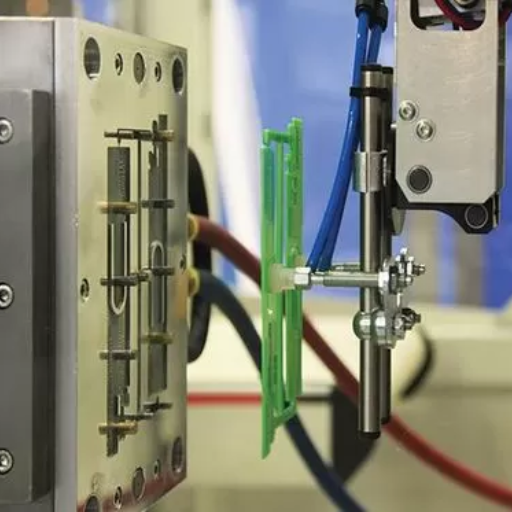
Advantages of Injection Molding
- High Efficiency: Immediately after the original mold is fabricated, this production process becomes highly efficient by permitting mass production of parts at a relatively low cost per unit.
- Consistency and Precision: For instance, injection molding ensures that every part produced has a very high level of consistency and precision which shows that the manufacture of complex parts with tight tolerances can be replicated accurately many times.
- Material Versatility: The technique features flexibility in terms of physical and mechanical property as it uses diverse thermoplastics and thermosets among other materials during its implementation.
- Reduced Waste: A lot of times, this method results in minimal waste as any excess or scrap left can be redirected to recycling or reprocessed again.
- Enhanced Strength: Final products may have their strength increased through fillers addition on the raw material.
Challenges of Injection Molding
- High Initial Costs: Designing and fabricating molds is costly which creates an uneconomic process for limited quantity production runs.
- Design Limitations: It is hard and very expensive to alter a mold’s design once it is made, thereby limiting flexibility in designing.
- Lead Time: The period it takes to develop, prototype as well as produce a mold can be long thereby pushing the commencement of production forward.
- Material Constraints: Injection molding restricts the selection of materials because not all materials are suitable for it.
- Complexities in Process Control: In order to make parts that are of high quality ones need sophisticated machines and expertise since this will demand for exactness in temperature controlling, pressurization as well minimum cooling rates.
The Cost-Effectiveness of Plastic Injection Molding
Plastic injection molding is widely perceived as a manufacturing technique that saves costs, mainly for large-scale production runs. This efficiency comes from several key attributes.
- Economies of Scale: As the volumes of production goes up, the cost per unit drops significantly. The initial investment in mold creation offset by the low per-unit cost during mass production.
- Material Efficiency: Minimizing wastages and overall material costs are possible through recycling and reusing of excess materials.
- Labor Savings: Cost of labour can be reduced by automation in injection moulding which also increases the speed of production hence cutting down on costs.
In summary, although there might be high initial setup costs, long term savings in terms of material, labor and unit production make plastic injection molding an economical choice for large scale manufacturing.
Common Defects and How to Avoid Them
Although plastic injection molding has its benefits, it can also result in multiple defects if not done properly, few of which are discussed below:
- Warping: This is when parts distort due to uneven cooling rates resulting into internal stresses. To avoid warping, ensure that the mould design optimizes for uniform cooling and consistent cooling rates. The cooling time and pressure may be adjusted as well.
- Sink Marks: These are small depressions that occur when material shrinks as it cools, often due to thick sections in the part design. Sink marks can be reduced by minimizing wall thickness and keeping them even throughout a section of a component. Also critical is ensuring adequate packing pressure and proper gate location.
- Flash: Flash is extra material that spills out from the mold cavity. High injection pressure, worn molds or poor clamping force may commonly cause it. Mold maintenance and integrity should thus be ensured; appropriate clamping forces used as well as optimal injection pressures set so as to avoid flash.
Manufacturers who recognize these defects and take corrective action will improve product quality and reliability on their injection molded parts.
The Influence of Injection Pressure on Molded Parts
Injection pressure is crucial to the characteristics and attributes of injection molded components. Proper filling of the mold cavity can be achieved through high injection pressure, which therefore reduces occurrence of short shots and improves overall surface finish. However, very high pressure may result into defects like flash, overpacking and internal stresses leading to warping and brittleness. Conversely, low injection pressure can cause poor surface finish as well as incomplete filling. A balance should be struck in setting injection pressures that depend on the material being injected, part design, and mold structure; for optimized performance of injection pressures. Injection pressures that are correctly calibrated enable dimensions to be accurate, structures to hold shape perfectly and surface finishes that are consistent in manufactured moulded parts.
Frequently Asked Questions (FAQs)
Q: What are the common types of injection molding technologies used in the industry?
A: The common types of injection molding technologies include standard injection molding, thin wall molding, metal injection molding, and liquid silicone injection molding. These technologies are used to produce plastic parts, metal parts, and thin wall components for various applications.
Q: What materials are used in advanced injection molding technologies?
A: Materials used in advanced injection molding technologies include various types of plastics, metals, and silicone. Specifically, resin, melted plastic, and liquid silicone are commonly injected into the mold to produce plastic items and metal parts.
Q: How does metal injection molding differ from standard injection molding?
A: Metal injection molding involves injecting melted metal into the mold, whereas standard injection molding uses melted plastic. Metal injection molding is often used for manufacturing metal parts that require high precision and strength, while standard injection molding is used for producing plastic products.
Q: What types of products are typically manufactured using injection molding technologies?
A: Injection molding is used to produce a wide variety of products, including automotive parts, electronic components, medical devices, and consumer goods. The injection molding industry utilizes this technology to manufacture both small and large parts with precise details and complex geometries.
Q: How does the cooling process affect the quality of the final product in injection molding?
A: The cooling process is crucial in injection molding as it affects the dimensional accuracy and mechanical properties of the final product. Proper cooling ensures that the plastic is injected and solidifies uniformly, preventing defects such as warping and shrinkage, which can impact the quality of the plastic part.
Q: What are the advantages of using liquid silicone injection molding?
A: Liquid silicone injection molding offers several advantages, including the ability to produce parts with complex geometries, superior chemical resistance, and excellent thermal stability. It is often used in medical and automotive applications where high performance and durability are required.
Q: Can 3D printing technology be integrated with injection molding methods?
A: Yes, 3D printing technology can be integrated with injection molding methods to create prototypes and molds. This hybrid approach allows for rapid prototyping and testing before mass production, improving design accuracy and reducing development time.
Q: What roles do the injection unit and tool play in the injection process?
A: The injection unit is responsible for melting and injecting the plastic or metal into the mold, while the tool (or mold) shapes the material into the desired form. Both components are critical in ensuring the efficiency and accuracy of the injection process.
Q: How are thin wall plastic parts produced using injection molding?
A: Thin wall plastic parts are produced using high-speed and high-pressure injection molding processes. This technique allows the melted plastic to flow into the mold rapidly, creating thin-walled sections that maintain structural integrity and are used in various applications, such as packaging and electronics.
Q: What are the key injection molding applications in the automotive industry?
A: In the automotive industry, injection molding is used to manufacture a wide range of components, including dashboard panels, bumpers, door handles, and interior trims. This technology provides the precision and durability required for automotive parts, contributing to vehicle safety and performance.






